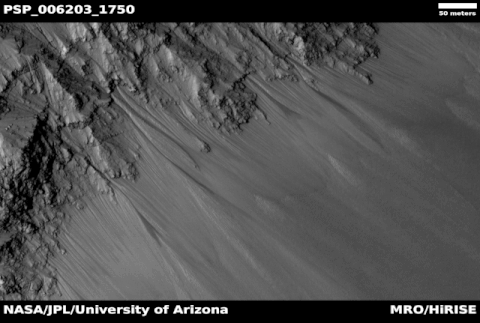Bad News, Wannabe Martians: The Water on Mars May Not Be Drinkable
Make sure you pack a water bottle.
MOST POPULAR
It was exciting news when scientists confirmed the presence of liquid water on the surface of Mars last year. Most of the focus of Mars water is on what it means for potential life. But another important reason to find liquid water on Mars is for human consumption. If drinkable liquid water is present on Mars, crewed missions may not have to carry as much water with them, which means much lower fuel costs and cheaper Mars trips.
Unfortunately, it looks like the water on Mars may not be very useful after all.
Scientists have previously identified liquid water on Mars in features known as recurring slope lineae (RSL), which are dark streaks that run down hillsides. RSL have been observed since 2010, and last year the Mars Reconnaissance Orbiter determined that RSL contain very briny liquid water. However, scientists still aren't sure where the water is coming from. A few possibilities are that the water is coming from melting ice, condensation from the atmosphere, or underground aquifers. But it's difficult to tell which.
Scientists at the University of Arizona recently published a paper taking a closer look at RSL to try and rule out some of the possible sources. The team managed to rule out melting ice as a source, because many RSL occur close to the equator, where any ice would have melted long ago. They also conclude that if the water is coming from underground, it must be held in very deep aquifers, which would make the water far too salty to desalinate.
The study concludes that the most likely source of liquid water on Mars is the atmosphere. If that is the case, it may be possible for humans on Mars to collect that water and drink it. But, the study cautions, it is also possible that RSL aren't actually water at all, which puts scientists right back to square one.
Determining whether there is water on Mars is tricky, because scientists need to be careful with how they go about exploring the red planet. NASA could easily send a rover to study some RSL, but that would risk contaminating Mars water with Earth bacteria. There are a number of future plans, such as more advanced satellites and potential Mars gliders or planes, but for now scientists pretty much only have orbital photos to go on, which means we will have to wait a while to get any kind of definitive answer.
Source: Journal of Geophysical Research: Planets via GeoSpace






No comments:
Post a Comment